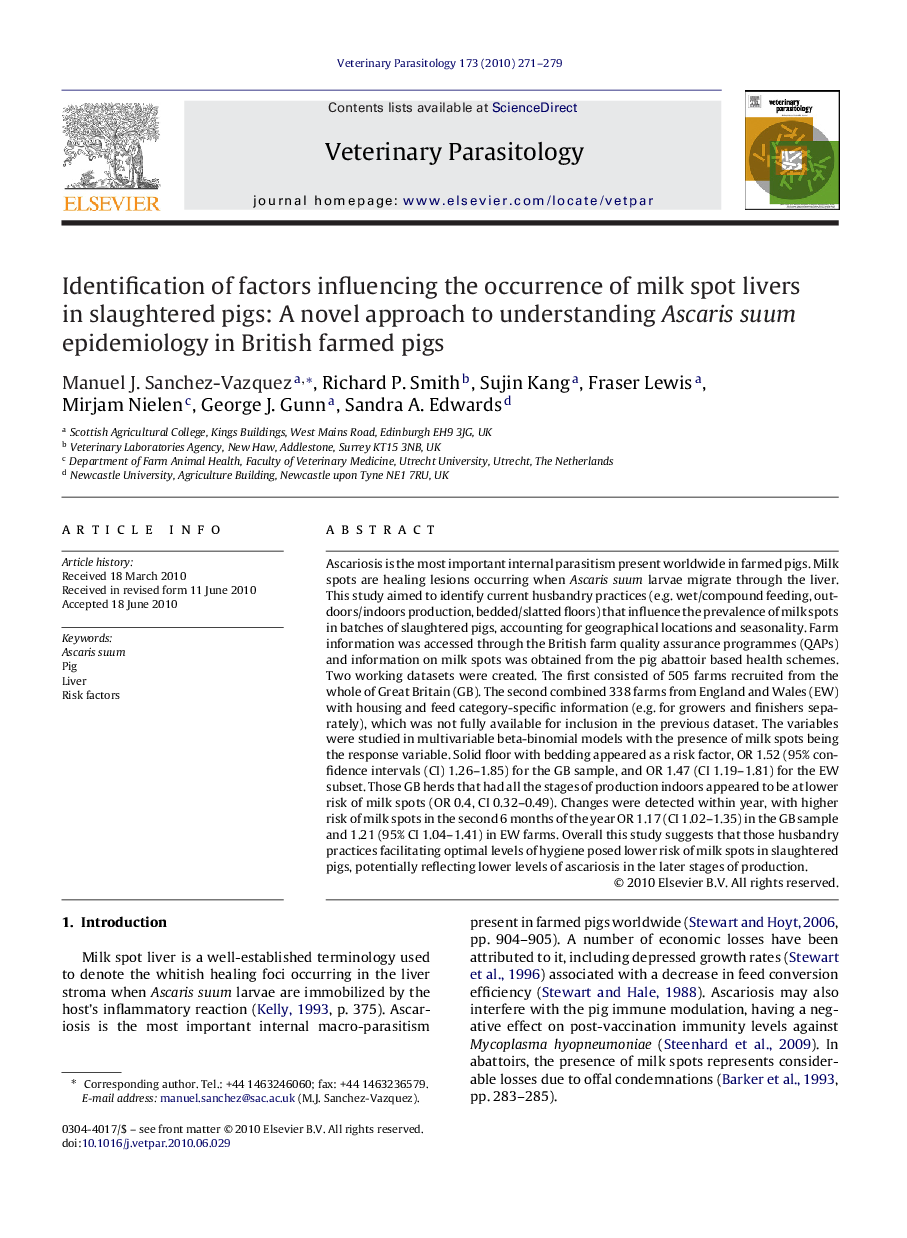| کد مقاله | کد نشریه | سال انتشار | مقاله انگلیسی | نسخه تمام متن |
|---|---|---|---|---|
| 2470578 | 1555734 | 2010 | 9 صفحه PDF | دانلود رایگان |

Ascariosis is the most important internal parasitism present worldwide in farmed pigs. Milk spots are healing lesions occurring when Ascaris suum larvae migrate through the liver. This study aimed to identify current husbandry practices (e.g. wet/compound feeding, outdoors/indoors production, bedded/slatted floors) that influence the prevalence of milk spots in batches of slaughtered pigs, accounting for geographical locations and seasonality. Farm information was accessed through the British farm quality assurance programmes (QAPs) and information on milk spots was obtained from the pig abattoir based health schemes. Two working datasets were created. The first consisted of 505 farms recruited from the whole of Great Britain (GB). The second combined 338 farms from England and Wales (EW) with housing and feed category-specific information (e.g. for growers and finishers separately), which was not fully available for inclusion in the previous dataset. The variables were studied in multivariable beta-binomial models with the presence of milk spots being the response variable. Solid floor with bedding appeared as a risk factor, OR 1.52 (95% confidence intervals (CI) 1.26–1.85) for the GB sample, and OR 1.47 (CI 1.19–1.81) for the EW subset. Those GB herds that had all the stages of production indoors appeared to be at lower risk of milk spots (OR 0.4, CI 0.32–0.49). Changes were detected within year, with higher risk of milk spots in the second 6 months of the year OR 1.17 (CI 1.02–1.35) in the GB sample and 1.21 (95% CI 1.04–1.41) in EW farms. Overall this study suggests that those husbandry practices facilitating optimal levels of hygiene posed lower risk of milk spots in slaughtered pigs, potentially reflecting lower levels of ascariosis in the later stages of production.
Journal: Veterinary Parasitology - Volume 173, Issues 3–4, 29 October 2010, Pages 271–279